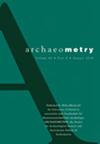考古学中的时间关系:综述与新类型学
IF 1.5
3区 地球科学
0 ARCHAEOLOGY
引用次数: 0
摘要
本文提出了一种适合考古学使用的新的时间关系类型学。它讨论了所提出的系统的特性和优势,并将其与其他三种时间关系类型:Allen关系、Holst关系和CIDOC-CRM进行了比较。有人认为,需要一种比目前可用的更详细的考古学时间关系类型,例如本文中提出的类型。最后提供了一个概要表,以帮助用户在不同的类型之间导航。本文章由计算机程序翻译,如有差异,请以英文原文为准。
Temporal relations in archaeology: a survey and a new typology
This article presents a new typology of temporal relations suited for archaeological use. It discusses the properties and advantages of the proposed system and compares it with three other typologies of temporal relations: Allen's relations, Holst's relation, and the CIDOC-CRM. It is argued that a more detailed typology of temporal relations in archaeology than currently available is called for, such as the one proposed in this paper. A final synoptic table is provided to help users navigate among the different typologies.
求助全文
通过发布文献求助,成功后即可免费获取论文全文。
去求助
来源期刊

Archaeometry
地学-地球科学综合
CiteScore
3.60
自引率
12.50%
发文量
105
审稿时长
6 months
期刊介绍:
Archaeometry is an international research journal covering the application of the physical and biological sciences to archaeology, anthropology and art history. Topics covered include dating methods, artifact studies, mathematical methods, remote sensing techniques, conservation science, environmental reconstruction, biological anthropology and archaeological theory. Papers are expected to have a clear archaeological, anthropological or art historical context, be of the highest scientific standards, and to present data of international relevance.
The journal is published on behalf of the Research Laboratory for Archaeology and the History of Art, Oxford University, in association with Gesellschaft für Naturwissenschaftliche Archäologie, ARCHAEOMETRIE, the Society for Archaeological Sciences (SAS), and Associazione Italian di Archeometria.
 求助内容:
求助内容: 应助结果提醒方式:
应助结果提醒方式:


